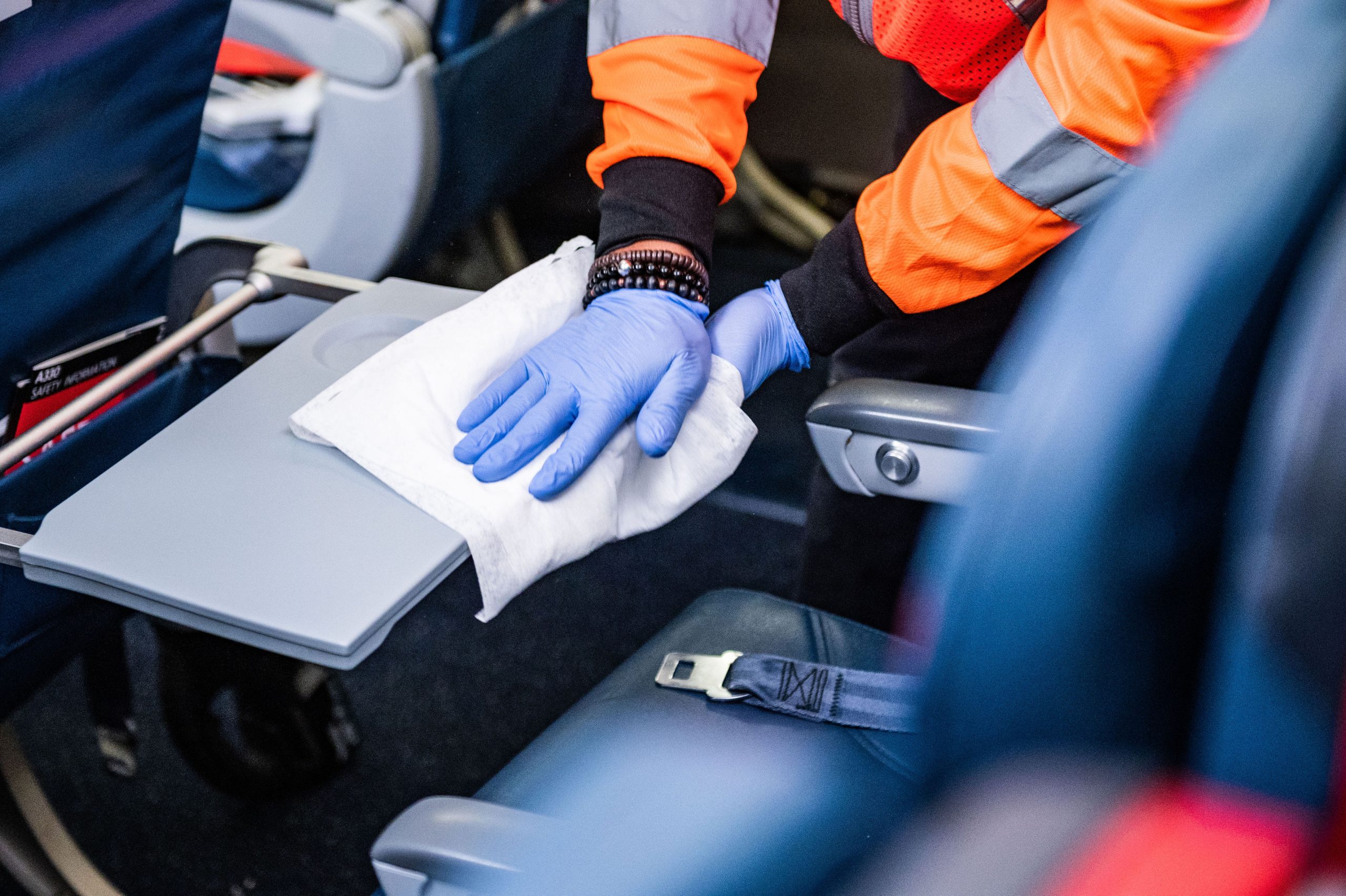Cleaning Car Seat Straps After Vomit (Step-by-Step Guide)
The unpleasant experience of vomit in a car can happen to anyone, whether it’s due to motion sickness or an unfortunate accident. When vomit comes into contact with car seat straps, it’s crucial to address the situation promptly and thoroughly. Cleaning car seat straps after vomit not only helps maintain a hygienic environment but also prevents stains and lingering odors.
In this comprehensive guide, we will walk you through the step-by-step process of effectively cleaning car seat straps after vomit. By following these instructions, you can restore the cleanliness and freshness of the straps, ensuring a safe and comfortable ride for passengers.
Understanding the composition of car seat straps and the importance of immediate action is crucial to prevent stains and eliminate unpleasant smells. By taking proper precautions and utilizing readily available cleaning supplies, you can tackle this task efficiently and effectively.
So let’s dive into the cleaning process, exploring the necessary steps and additional tips to successfully clean car seat straps after vomit.
Understanding the Car Seat Cleaning Process
Cleaning car seat straps after vomit requires a systematic approach to ensure thorough removal of stains, odor, and bacteria. Understanding the composition of the straps and the right cleaning techniques will help you achieve the best results.
1. Composition of car seat straps
Car seat straps are typically made of nylon or polyester webbing, which are durable and resistant to wear. However, they can absorb liquids and retain odors if not cleaned properly. The straps may also have padding or fabric covers, which require special attention during the cleaning process.
2. Importance of immediate action
It’s crucial to address the vomit on car seat straps as soon as possible. The longer the vomit remains on the straps, the harder it becomes to remove stains and odors. Immediate action minimizes the chances of permanent damage and ensures a hygienic environment.
3. Considerations for safety and maintenance
When cleaning car seat straps, it’s essential to prioritize safety. Ensure that the car seat is securely installed and that the straps are detached for cleaning. Follow manufacturer instructions and guidelines to prevent any damage to the straps or the car seat itself.
Preparing Car Seat Straps for Cleaning
Before you begin the process of cleaning car seat straps after vomit, it’s important to make necessary preparations to ensure a thorough and safe cleaning experience. By gathering the right supplies and taking precautions, you can effectively remove stains, odors, and bacteria from the straps.
Supplies Needed
1. Mild soap or detergent: Choose a gentle soap or detergent suitable for cleaning fabric materials.
2. Warm water: Use warm water for better stain removal and to aid in breaking down dried vomit.
3. Soft cloth or sponge: Select a soft cloth or sponge that won’t damage the straps during cleaning.
4. Disinfectant spray: Opt for a disinfectant spray to kill bacteria and eliminate any lingering odors.
5. Baking soda: Baking soda is effective for neutralizing odors and can be used as a natural deodorizer.
6. Optional: Odor neutralizer: Consider using an odor neutralizer specifically formulated for fabric materials to ensure a fresh scent.
Safety Precautions
1. Use gloves: Wear disposable gloves to protect your hands from contact with vomit and cleaning agents.
2. Ensure good ventilation: Open car windows or clean the straps in a well-ventilated area to prevent inhaling strong odors or fumes from cleaning agents.
Step-by-Step Car Seat Cleaning Process
Follow these step-by-step instructions to effectively clean car seat straps after vomit. By following these guidelines, you can remove stains, eliminate odors, and ensure a fresh and hygienic environment for passengers.
Step 1: Removing excess vomit
– Use a disposable paper towel or cloth to carefully remove any visible chunks or excess vomit from the car seat straps.
– Be gentle to avoid spreading the vomit or pushing it further into the straps.
Step 2: Pre-treating the straps
– Create a cleaning solution by mixing mild soap or detergent with warm water in a bowl or bucket.
– Dip a soft cloth or sponge into the cleaning solution and wring out excess liquid.
– Gently wipe down the car seat straps, focusing on the areas affected by vomit.
– Allow the cleaning solution to sit on the straps for a few minutes to help break down stains and odor.
Step 3: Hand-washing the straps
– After pre-treating, continue by hand-washing the car seat straps.
– Dip the soft cloth or sponge into the cleaning solution and gently scrub the straps, paying extra attention to stained areas.
– Use gentle motions to avoid damaging the straps or causing fraying.
Step 4: Rinsing and drying the straps
– Rinse the car seat straps thoroughly with clean water to remove any soap residue.
– Wring out excess water from the straps.
– Hang the straps in a well-ventilated area or lay them flat on a clean towel to air dry completely.
– Ensure that the straps are fully dry before reattaching them to the car seat.
Step 5: Deodorizing the straps (optional)
– If there are still lingering odors after cleaning, you can use baking soda as a natural deodorizer.
– Sprinkle baking soda generously over the straps and let it sit for several hours or overnight.
– Vacuum or brush off the baking soda from the straps thoroughly.
Step 6: Final touches
– Once the car seat straps are dry and odor-free, you can spray them with a disinfectant spray to kill any remaining bacteria and provide a fresh scent.
– Follow the instructions on the disinfectant spray and allow it to dry completely before using the car seat.
Additional Tips and Considerations
Cleaning car seat straps after vomit requires careful attention to detail and proper maintenance to ensure their cleanliness and longevity. Here are some additional tips and considerations to keep in mind:
1. Spot cleaning for immediate spills
If a fresh vomit incident occurs while traveling, use a damp cloth or baby wipes to quickly wipe off the vomit from the car seat straps. This helps prevent the vomit from drying and becoming more difficult to clean later.
2. Avoid harsh cleaning agents and bleach
Harsh chemicals and bleach can damage the fabric and weaken the integrity of the car seat straps. Stick to mild soaps or detergents specifically formulated for fabric materials.
3. Regular maintenance
Incorporate regular maintenance into your cleaning routine to prevent buildup and extend the lifespan of the car seat straps. Wipe down the straps with a damp cloth periodically to remove dust, dirt, and any spills.
4. Follow manufacturer instructions
Consult the car seat manufacturer’s instructions for any specific guidelines on cleaning the straps. Different car seat models may have specific recommendations or restrictions regarding cleaning methods and products.
5. Seek professional help for extensive stains or lingering odors
If the vomit stains are stubborn or there are persistent odors despite your cleaning efforts, consider seeking professional upholstery cleaning services. They have specialized equipment and expertise to handle tough stains and deep cleaning.
6. Consider using removable strap covers
To protect the car seat straps from direct contact with vomit or spills, you can invest in removable strap covers. These covers can be easily removed and washed separately, reducing the need to clean the entire straps.
FAQ:
Q1: Can I machine wash car seat straps after vomit?
A: It is generally not recommended to machine wash car seat straps, as the agitation and heat from the machine can damage the straps and compromise their integrity. Hand-washing is the preferred method for cleaning car seat straps after vomit.
Q2: What should I do if the vomit stain on the car seat straps has dried?
A: If the vomit stain has dried, you can start by removing any excess residue using a soft brush or cloth. Then, follow the step-by-step cleaning process mentioned earlier, paying extra attention to pre-treating the straps and using a gentle scrubbing motion to loosen the dried stain.
Q3: Can I use bleach to clean car seat straps after vomit?
A: It is not recommended to use bleach on car seat straps, as it can weaken the fabric and cause discoloration. Stick to mild soaps or detergents specifically formulated for fabric materials.
Q4: How do I remove lingering odors from car seat straps after cleaning?
A: After cleaning the car seat straps, you can sprinkle baking soda on them and let it sit for several hours or overnight. Baking soda is effective in absorbing odors. Vacuum or brush off the baking soda thoroughly to remove any remaining odor particles.
Q5: Are there any specific products I should avoid when cleaning car seat straps after vomit?
A: Avoid using harsh chemicals, solvents, or abrasive cleaners that can damage the fabric of the straps. Stick to mild soaps or detergents and follow the manufacturer’s instructions for cleaning and maintenance.
Q6: How often should I clean car seat straps after vomit incidents?
A: Clean car seat straps after each vomit incident to prevent stains, odors, and the buildup of bacteria. Prompt cleaning ensures a hygienic and fresh environment for passengers.
Q7: What should I do if the vomit smell persists after cleaning?
A: If the odor lingers even after cleaning the car seat straps, you can try using an odor neutralizer specifically formulated for fabric materials. These products are designed to eliminate odors and provide a fresh scent.
Q8: Can I use disinfectant wipes to clean car seat straps after vomit?
A: Disinfectant wipes can be used to wipe down the car seat straps, but they may not be sufficient for thorough cleaning. It is recommended to follow the step-by-step cleaning process mentioned earlier for effective stain and odor removal.
Conclusion
Cleaning car seat straps after vomit may seem like a daunting task, but with the right approach and proper techniques, it can be effectively tackled. Prompt action, gentle cleaning, and thorough drying are key to restoring the cleanliness and freshness of the straps.
With a clean and hygienic car seat, you can ensure a comfortable and pleasant journey for you and your passengers.
- Protecting Your Truck Bed: A Guide To Truck Bed Covers - July 14, 2025
- Finding The Right 88-98 Chevy Truck Bed Cover - July 14, 2025
- Finding The Right 88-98 Chevy Truck Bed Cover - July 14, 2025

